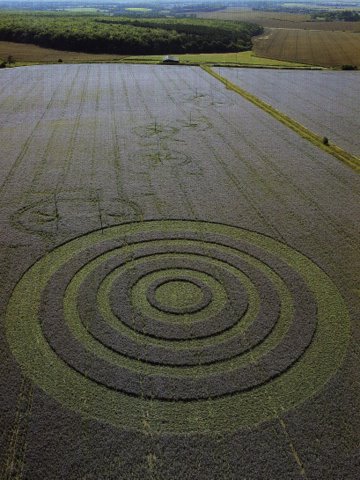Scientific name: Borage officianalis
Plant Family: Boraginaceae
Common names: Borage, starflower
By Susan Bruneni
One of the early bloomers in a springtime Santa Fe garden is borage, presenting a showy display of vivid blue star-shaped flowers. Borage is a member of the Boraginaceae family, which includes about 2,000 species and 146 genera of shrubs, trees and herbs. It is an annual but freely re-seeds.
Borage was a common kitchen garden herb in the 19th century. Leaves were boiled, or used in salads to add a mild cucumber flavor. Every garden had a cluster of borage to supply the ingredients for candied flowers, a staple garnish for cakes and desserts.
Today, borage has joined the “elite” list of companion plants, specifically included in gardens to benefit other plants and reduce use of chemicals. Borage should be planted especially with tomatoes, squash and strawberries to increase pollination by attracting bees. It also “deters tomato worms, and improves growth & flavor” according to The Encyclopedia of Organic Gardening, J.I. Rodale.
During World War I, Mrs. M (Maud) Grieve generated pamphlets in the UK to re-introduce home gardening and use of herbs in the household. Grieve was a Fellow of the Royal Horticultural Society with an encyclopedic knowledge of medicinal plants and her work was compiled into the Modern Herbal in 1931. Her description of borage was, “the whole plant is rough with white, stiff, prickly hairs, round stems that are branched, hollow and succulent; the leaves alternate, large, wrinkled, deep green, oval and pointed. The flowers are bright blue and star-shaped, distinguished from those of every plant in this order by their prominent black anthers, which form a cone in the centre and have been described as their beauty spot.”
Grieve adds the following historical references to medicinal uses: “According to Dioscorides and Pliny, borage was the famous Nepenthe of Homer, which when drunk steeped in wine, brought absolute forgetfulness. Parkinson commends it ‘to expel pensiveness and melanchollie.’ Bacon says that it ‘hath an excellent spirit to repress the fuliginous vapour of dusky melancholie.’ Culpepper finds the plant useful in putrid and pestilential fever, the venom of serpents, jaundice, consumption, sore throat, and rheumatism.’”

Borage crop circle (photo: Donna Bone)
Borage is grown commercially for its high oil-content seed, and is one of the four major crops where crop circles frequently appear. Santa Fe landscape designer Donna Bone will present a lecture entitled “Crop Circles: Mystery in the Making,” Thursday, March 15th for the Santa Fe Botanical Garden. Donna will share images and information from a recent journey to learn more about crop circles.
“I don’t think the selection of a borage field for crop circles has anything to do with the borage itself,” says Donna. “It is probably more related to the location and time when the plant matures,” she said. Donna also recommends to her clients at Design with Nature that they include borage in their gardens as a companion plant.
Other members of the Boraginaceae family include comfrey, forget-me-nots, Franciscan and rocky mountain blue bells. Four others are found at the Leonora Curtin Wetland Preserve, usually in the dry uplands habitat. They are: Bow-nut cryptantha (Cryptantha cinerea), Thicksepal hiddenflower (Cryptantha crassisepala) , Puccoon (Lithospermum incisum) and Hound’s tongue (Cynoglossum officinale). The roots of Puccoon have been widely used for dyes ranging from yellow to red. The common name Hound’s tongue came from the belief that wearing a leaf in one’s shoe would provide protection from dog bites.
Few plants can equal the diversity of borage. It adds joy to your garden with its floral display while it is hard at work protecting your tomatoes. And when the day is done, it can meet you for dinner on your salad plate.


